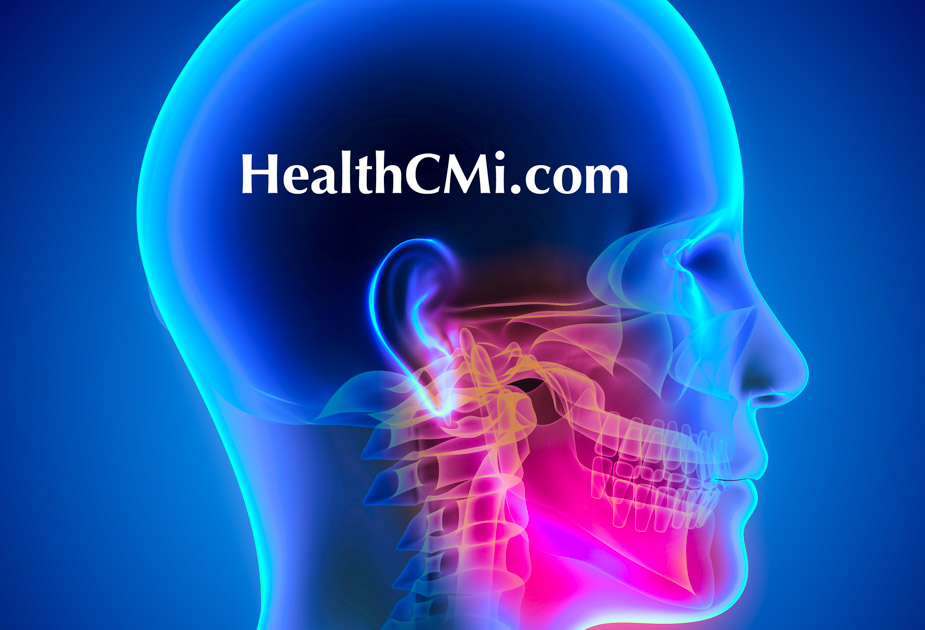
Acupuncture alleviates pain and motor dysfunction of the temporomandibular joint (TMJ). Researchers tested two approaches to clinical care with acupuncture. A combination of manual acupuncture plus electroacupuncture produced optimal outcomes. [1]
Disorders that affect the masticatory muscles and the temporomandibular joint of the human body, presenting with organic changes characterized by pain, limitation of mouth opening, and joint clicking sounds, are referred to as temporomandibular joint (TMJ) dysfunction syndromes. It often occurs unilaterally and potentially progresses to bilateral involvement. It is marked by recurrent episodes and a prolonged disease course.
Traditional Chinese medicine (TCM) classifies TMJ disorders as a bi syndrome (obstruction syndrome), attributing onset to the invasion of external pathogenic factors such as wind, cold, and dampness, which are pernicious influences attributed to the external environment leading to circulation blockages. The external invasion may be precipitated by internal deficiencies. The Huang Di Nei Jing Su Wen (Yellow Emperor’s Canon of Internal Medicine) notes that if pathogenic wind, cold, or dampness invades the body, it leads to channel obstruction and bi syndrome may ensue. Learn more in the acupuncture CEU course:
Researchers randomly selected 86 patients from the Eighth People's Hospital (Nanning City, Guang Xi) diagnosed with TMJ dysfunction syndromes. The patients were divided into a control group (n=43, treated with acupuncture) and an observation group (n=43, treated with both acupuncture and electroacupuncture) using a randomized numerical table method.
The control group received a manual acupuncture treatment protocol. Patients were positioned in either a lateral or supine position. Selection of acupuncture points included ST7(Xiaguan), N-HN-20 (Qianzheng, 0.5 to 1 cun anterior to earlobe), GB2 (Tinghui), SI19 (Tinggong), LU7 (Lieque), TB17 (Yifeng), and ST6 (Jiache).
Disposable sterile acupuncture needles of 1.5 inches length were used, applying the twisting-rotating and tonification-sedation method to stimulate the acupoints. Needles were left in place for 30 minutes after the patient experienced a sensation of soreness or heaviness (deqi sensation) in the affected area. Moxa pieces were applied to the handles of the needles for 20 minutes of moxibustion, based on the patient's tolerance.
The observation group underwent electrical therapy in addition to the manual acupuncture treatment. An electroacupuncture device was set to alternate between 1-10k Hz and 25-100 Hz. Electroacupuncture was applied to local points for 20 minutes, once a day. A single course of treatment lasted for ten days, followed by a 3-day break before the next course. The total duration of treatment consisted of two courses.
Results
The observation group showed significantly lower Visual Analogue Scale (VAS) scores post-treatment in comparison to the control group. The clinical treatment efficacy in the observation group was also markedly higher than that in the control group, with all differences being statistically significant. The observation group had greater pain reduction combined with improved ease of range of motion.
Researcher Analysis
Research indicates that the direct action of endogenous morphine-like substances on the opiate receptors within the patient's nervous system can effectively alleviate pain, which explains the analgesic mechanism of electroacupuncture treatment. This treatment also promotes blood circulation, encourages the efficient reabsorption of inflammatory substances, and enhances the function of the masticatory muscles.
Compared with manual acupuncture treatment, the combined therapeutic plan of manual acupuncture plus electroacupuncture shows a more significant reduction in clinical symptoms and optimization of efficacy, making it a valuable clinical protocol for the alleviation of TMJ syndrome.
Reference:
[1] Xu Jing, Wu Yihua. Diagnostic analysis of acupuncture combined with medium-frequency pulsed electricity in treating mandibular joint syndrome [J]. China Rural Health, 2020, 12(24):72.


